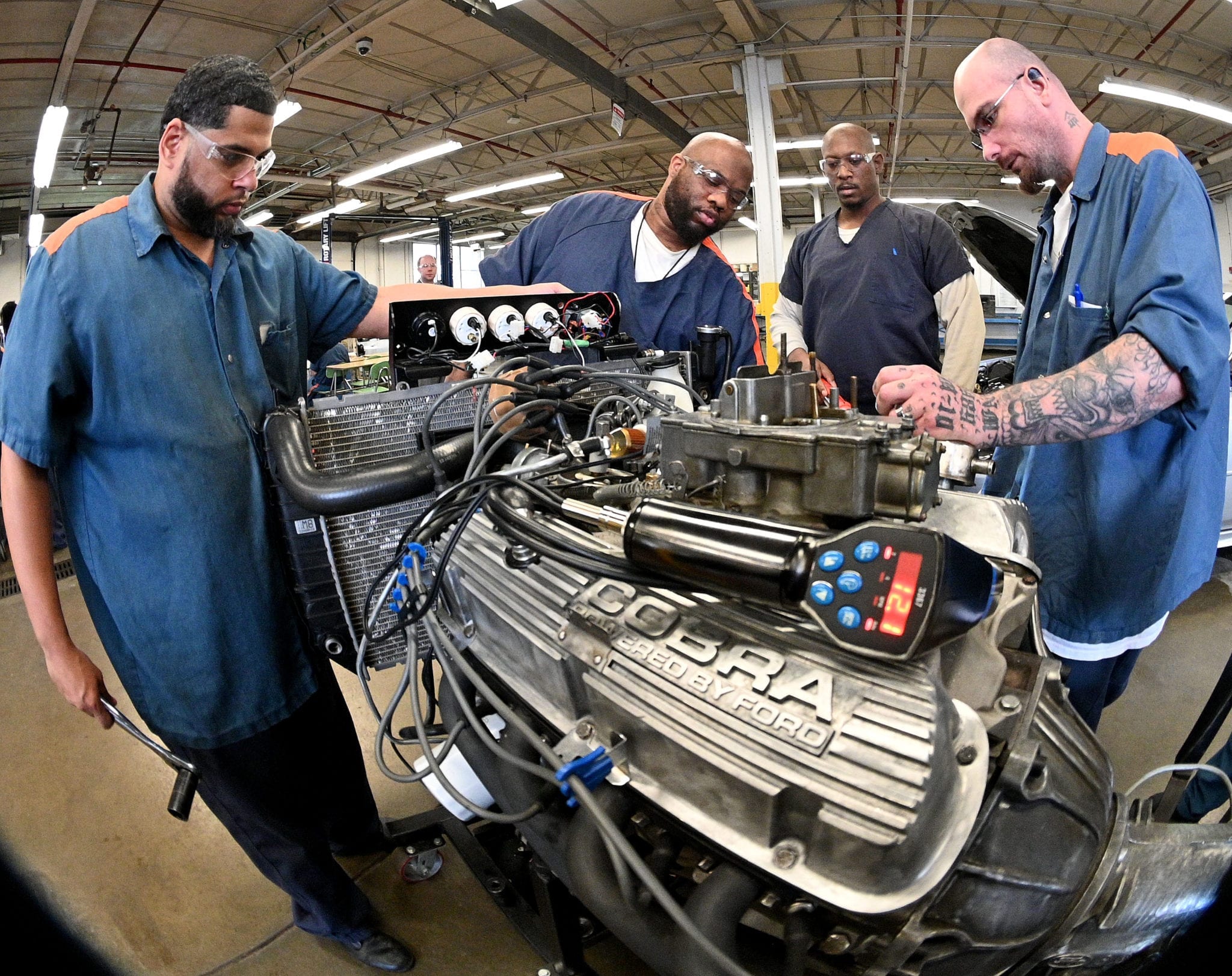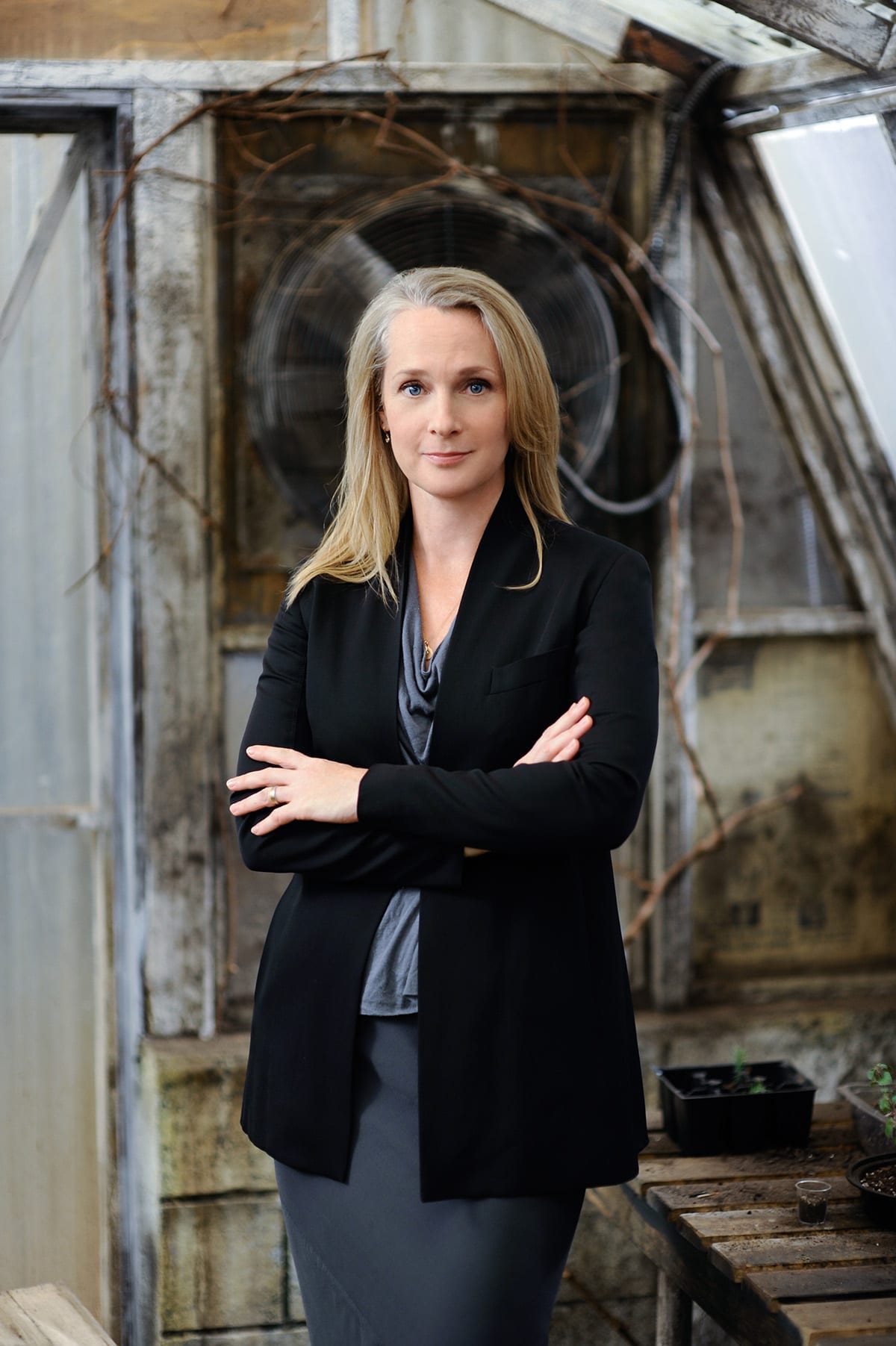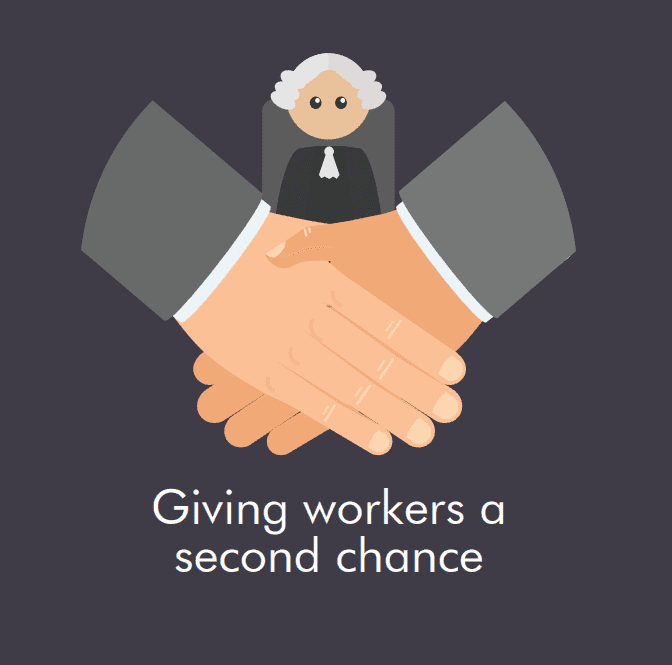 “This is good money here,” says Michael Smith, 41. “The benefits are gonna be good. This is probably the best job I’ve had.
“This is good money here,” says Michael Smith, 41. “The benefits are gonna be good. This is probably the best job I’ve had.
Since November, Smith has been working as an auto mechanic at the Spartan Toyota dealership in Lansing, Michigan. He got his training and certifications at the innovative Vocational Village program of the Parnall Correctional Facility in Jackson, Michigan, where he was serving time for a nonviolent felony.
The Vocational Village programs at Parnall and a second Michigan prison, in Ionia, groom inmates for positions in nearly a dozen skilled trades that local employers need to fill, including carpentry, masonry, plumbing, welding, electrical wiring, operating machine tools and robotic arms, truck driving, and forklift operation. By the end of this year a third Vocational Village, at a women’s prison in Ypsilanti, will start training inmates there in computer coding, 3-D printing, carpentry, graphic design, and cosmetology. Though the program’s still very young, early assessments from employers, prison officials, and reentering inmates have been strongly positive.
“The data so far show us that this is working,” says Chris Gautz, a spokesperson for the Michigan Department of Corrections (MDOC), “and we will continue to enhance the concept to provide even better results.”
Smith was paroled last November after 23 months in custody. The very next day he had a job interview lined up with Joe Criscuolo, whose family runs six auto dealerships across Michigan, including Spartan Toyota. By then, Criscuolo had already reviewed Smith’s background and paperwork, Criscuolo says, and just needed to meet him in person. They shook hands that day, and Smith started the following Monday, just six days after release. He’s an entry-level technician in the express service department, initially earning an hourly wage but on track for promotion to a $40,000 – to – $80,000 salaried mechanic’s position, according to Criscuolo.
Smith now considers his arrest “a blessing in disguise,” he says, because of Vocational Village. “That program is specifically why I got the job I have now.”
Prior to Vocational Village, MDOC—like most state prison systems—had long offered isolated vocational training courses, explains public information officer Gautz. But the Vocational Village program, first launched at the Ionia facility in spring 2016, offers a more far more realistic, holistic, and rigorous approach to both job training and job placement. Both the inmate and prison officials commit to making the prisoner’s reentry into society a success.
The key to the program, which was conceived by MDOC director Heidi Washington, is that the prison truly partners with the business community.
“We needed to get employers’ input, and we needed their buy-in,” says Gautz. Employers tell prison officials what trades are in demand in which communities, and also what “soft skills” inmates need to succeed in the real world. First and foremost, for instance, they need to become habituated to the discipline of a standard workday, which many of them have never experienced.
 In light of that advice, prison officials set up each Vocational Village as a community apart from the rest of the prison. Participants—about 200 per Village—go together to the training facility in the morning, have lunch together there, and return together in the afternoon to their own separate housing unit. “They never interact with other prisoners,” says Gautz, “so they’re never around the negativity, the gangs, the people with nothing to lose.”
In light of that advice, prison officials set up each Vocational Village as a community apart from the rest of the prison. Participants—about 200 per Village—go together to the training facility in the morning, have lunch together there, and return together in the afternoon to their own separate housing unit. “They never interact with other prisoners,” says Gautz, “so they’re never around the negativity, the gangs, the people with nothing to lose.”
The training day roughly mimics a workday. Smith, the Toyota mechanic, says his training at Parnall started at 6:30 a.m. and went until 2 p.m., with a short break for lunch. Afterward, back at the dormitory, there was sometimes homework, he says, though he could also watch television or play chess.
To preserve the discipline of the workday, visitation hours are confined to evenings or weekends, MDOC’s Gautz explains. “If you’re working,” he says, “you can’t tell the boss, ‘I’m taking off to meet my aunt today.’ It was a mind-set change for families, but we had to make this as real-world as possible.”
Inmates apply to get into the program, which is highly competitive. While MDOC now houses about 38,000 inmates statewide, there are only about 400 slots in the Vocational Village program—rising to about 600 once the women’s facility program gets up and running. To be eligible, prisoners must be within about 18 months of their parole date, show an aptitude for the skill they seek to learn, and have an outstanding disciplinary record.
Setting up the first two Villages cost the state about $7 million, Gautz says, mostly to buy state-of-the-art training equipment and to renovate or construct physical facilities. Ongoing costs are about $3 million for the two sites, but mostly for payroll that would have been spent on conventional programs anyway.
No formal return-on-investment study was performed, says Gautz, because “our mission is public safety. We accomplish that by reducing recidivism. There is not an acceptable cost to allowing new crimes to happen.”
While inmates must work hard in the program, prison officials also do their part to make sure the inmates succeed. To teach these trades in a way employers find credible, the state has had to invest in expensive equipment. Inmates train on up-to-the-minute robot arms or CNC (computer numerical control) machine tools that can cost more than $100,000 each, Gautz says. Apprentice truck drivers are prepared for their commercial driving licenses on 3-D simulators, with a truck seat, gearshift, dashboard, and three flat-screen monitors.
“The instructor can make it rain or snow, or make it light or dark,” says Gautz. “He’ll tell you, ‘Take a left. Go down that alley.’”
Reaching out to employers directly and through clubs like Kiwanis and Rotary, Vocational Village has compiled an email list of about 400 Michigan businesses that have expressed interest in its graduates. “We send out emails a couple times a month, saying, ‘Here’s all the guys, the trades, the certificates, and the days they’ll be paroled,’” Gautz explains. In recent months, he says, about two-thirds of graduates have had jobs waiting for them before they were paroled.
“We have open houses,” he explains. “We invite employers to interview inmates by phone, Skype, or they can come in. They can see the machines they’re working on, and recognize that they’re the same machines they’re using in their shops.”
Even after an inmate lands a job, Vocational Village remains involved.
“We don’t just hand them to [the employers],” Gautz says. “Everyone is still on parole, so we still have supervision when they get out.” They get periodic drug tests, their parole officers check up on them, and prison employment counselors stay in contact.
Adds Gautz: “We tell the employer, ‘You’re not just on your own. We’re invested in this person being a success.’”
The program is still too young to judge statistically. But only one graduate has gone back to prison so far, according to Gautz, which is obviously promising. Michigan’s statewide recidivism rate is 28.1 percent.
Spartan Toyota’s Criscuolo, who hired Smith, hired a second inmate from the program in December, and says he may hire more.
“I have a need, and they fill my need,” he says. “I’ve been doing this for 35 years, and the number of people today who show up every day and want to work eight hours a day are few and far between. These two people [from Vocational Village] seemed highly motivated. They really want to take a step in the right direction.”



 Like millions of Americans, I have a criminal record. I served 13 months in federal prison for a drug offense and was released in 2005. While I was locked up, Dan Hoffman, a friend who headed a technology company that delivered VoIP phone service, would visit me and he would say, “Hurry up and get out of here, the marketing department needs you!” A week after I was released from prison, Dan and his executive team—and all my coworkers—gave me a second chance. My new life began with a new job.
Like millions of Americans, I have a criminal record. I served 13 months in federal prison for a drug offense and was released in 2005. While I was locked up, Dan Hoffman, a friend who headed a technology company that delivered VoIP phone service, would visit me and he would say, “Hurry up and get out of here, the marketing department needs you!” A week after I was released from prison, Dan and his executive team—and all my coworkers—gave me a second chance. My new life began with a new job. 


